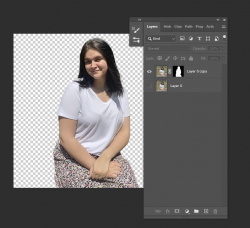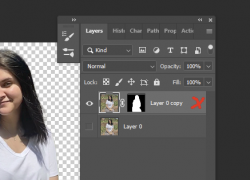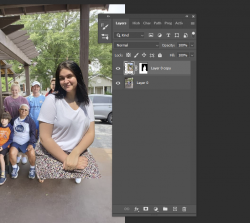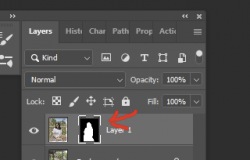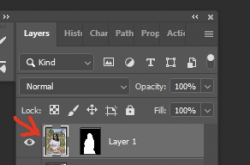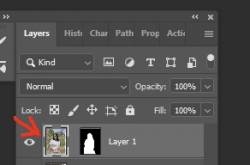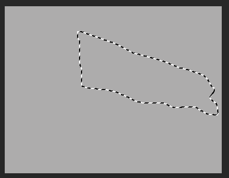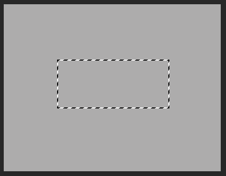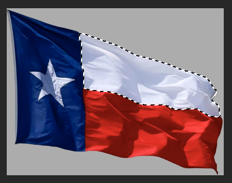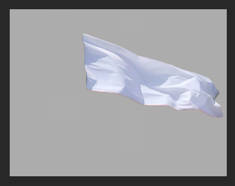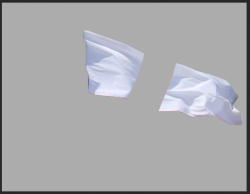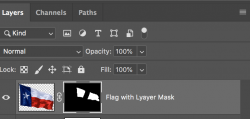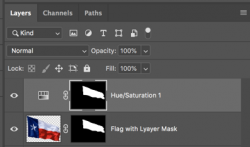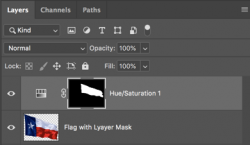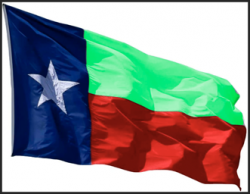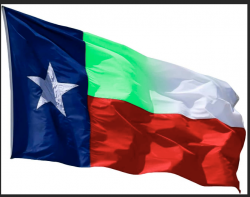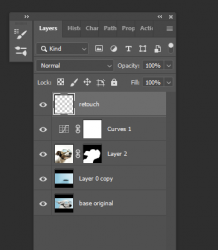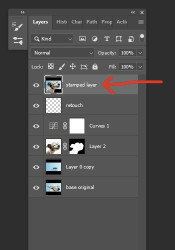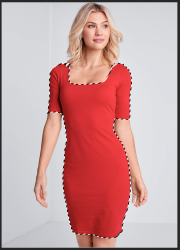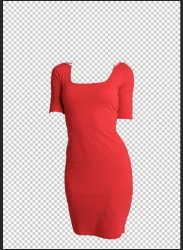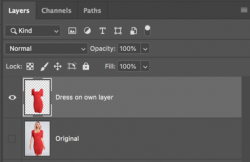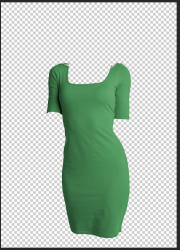Hi,
From this and other posts you’ve submitted, I think you need to mentally start over and reconceptualize how layer masks work. Here are some basic concepts. I hope this doesn’t get too long.
Every layer of any kind can have a layer mask, with the exception of the bottom Background layer:
- When you create an Adjustment Layer (Levels, Curves, etc.) it automatically has a layer mask attached.
- When you create a “normal” layer, it does not automatically come with a layer mask. But you can always add a mask by clicking the Mask icon at the bottom of the Layers palette.
- If you group several layers together in a Layer Group, the Layer Group itself can have its own layer mask, if you choose to add one.
- In a Layer Group, it is possible that the individual layers will have their own layer masks, and at the same time the Group itself can have a layer mask. In this case, the individual masks will affect only the layer they belong to, but the mask for the Group will affect every layer in the group.
You have asked whether a layer mask should be created
while the selection active, or not. Creating a layer mask while a selection is active is merely a convenient shortcut—never a requirement. Until you get more comfortable with masks, I suggest you avoid all shortcuts and do everything the long way. Therefore, for now, you should
never create a mask while a selection is active because it is confusing you. Instead, create the mask first (filled entirely with black or entirely with white) and then deal with the selection later. (More discussion of this to follow.)
You have asked how copy a partial selection from Photo A and paste it into Photo B, along with a mask. For now, you should do it this way:
- Make a selection from Photo A.
- Copy/Paste that selection into Photo B on a new blank layer and position it into place.
- Once it’s in place, add a layer mask to that layer and mask-away whatever is not needed.
You mentioned that you once tried painting black in a mask, but instead it painted black in the image itself. That is a mistake we all make; it happened to me yesterday.
- When you have a layer with a mask, the layers palette shows two little thumbnail boxes. The first thumbnail box is the image itself on that layer. The second thumbnail box is the mask.
- If you click each of these little thumbnail boxes with your mouse, you’ll see that whichever one you click becomes “active” and has an enhanced border around it.
- If you want to paint in the layer mask, then the mask thumbnail needs to be active. If you want to paint directly on the image itself, then image thumbnail needs to be active.
- You made the mistake of having the image thumbnail active when you painted black instead of the mask thumbnail being active. We’ve all done that a million times.
You have asked, “when does a selection become a mask?” The answer is that a selection can be helpful in creating an
accurate mask, but the use of selections in masking is an
optional step that you will only do when you want to. Here is a discussion of masking with selections:
Once you add a mask to a layer, you paint black or white in that mask in order to hide or reveal parts of the image. One way is to simply paint freehand in the mask. But if you need more accuracy and consistency, then you can mask using selections:
- Use any of the Selection tools to create an accurate selection of the area that needs masking. It's a good idea to save that selection in case you want to use that exact selection later on. That way, your masks will be consistent.
- Once you have an active selection (with the “marching ants” around it), go back into your layer mask. You will now find that you can only paint within the confines of your active selection. This allows you to paint in the mask very quickly and very accurately because it is impossible for your brush to accidentally stray over the border while the selection is active.
- If you need to accurately mask outside of that selection, then invert the selection. Once the selection is inverted, then only those areas outside of the selection are available for masking.
- At the risk of confusing you, I will now describe the shortcut that you have tried before: If a layer has no mask attached to it, you can first make a selection of a particular area. With the “marching ants” of that selection active, click the “Create Mask” icon. At that point, a layer mask will be created and will simultaneously be filled with black & white within the borders of your selection. This is simply a shortcut and is no different than doing it the long way by (1) first creating an empty layer mask, (2) then creating a selection, (3) then filling the mask within that selection with either black or white. For now, I recommend you avoid shortcuts, but I wanted to explain it.
Let’s say you have successfully created an accurate, complicated layer mask and you now want to use it elsewhere on different layers. There are several ways to accomplish this:
- If you duplicate your layer (Cmd/Ctrl-J), its layer mask will also be duplicated.
- Another way: Click your mouse to activate the thumbnail of your “good” layer mask. Now hold down the Alt key while dragging the layer mask to a different layer. Your original layer mask will now be copied onto that other layer.
- Another way: Create a new layer and create a layer mask for that layer. Hold down the Cmd/Ctrl key and click your mouse on the thumbnail for the “good” mask that you already created. That will create a “marching ants” selection that you can now use to paint black or white in the new, empty layer mask.
- Another way: If you are not familiar with Clipping Masks then ignore this. But... if two layers are clipped to each other, then any layer mask on one will automatically affect the other.
I hope this isn’t too much information.

